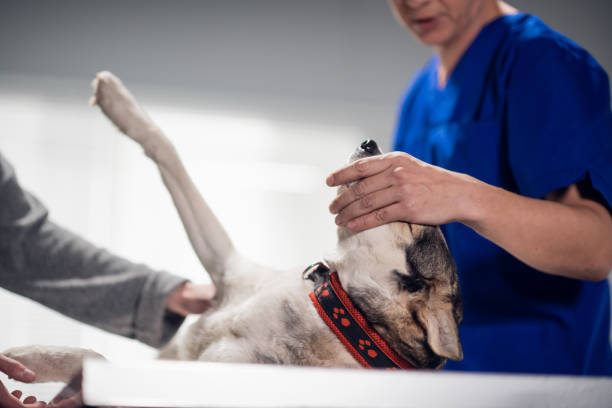Behavioral Pet Tips
Behavioral Training Tips: Expert Advice for Better Pet Behavior
Achieving and maintaining good pet behavior is a key part of ensuring a harmonious relationship between you and your furry friend. Whether you’re dealing with basic training or addressing specific behavioral issues, expert advice can help guide you toward success. Here’s a comprehensive guide with tips from behavioral experts to enhance your pet’s behavior.
1. Establish Clear Communication
a. Consistent Commands
- Use Simple Commands: Stick to clear, concise commands like “sit,” “stay,” and “come.” Avoid using multiple words or phrases for the same command to prevent confusion.
- Consistency is Key: Ensure that everyone in the household uses the same commands and follows the same rules to avoid mixed signals.
b. Positive Reinforcement
- Immediate Rewards: Reward your pet immediately after they perform the desired behavior. This helps them make a clear connection between the action and the reward.
- Variety of Rewards: Use a mix of treats, praise, and toys to keep your pet motivated and engaged.
2. Focus on Basic Training
a. Essential Commands
- Basic Obedience: Start with foundational commands such as “sit,” “stay,” “come,” and “down.” These commands are the building blocks for more advanced training.
- Leash Training: Teach your pet to walk on a leash without pulling. Use positive reinforcement to reward loose-leash walking.
b. Socialization
- Early Exposure: Introduce your pet to a variety of people, animals, and environments early on. Positive socialization experiences help reduce fear and aggression.
- Controlled Environments: Gradually expose your pet to new situations in a controlled manner to build their confidence and adaptability.
3. Address Behavioral Issues
a. Barking and Whining
- Identify Triggers: Determine what causes excessive barking or whining, such as boredom, anxiety, or a need for attention.
- Training Solutions: Use commands like “quiet” and reward your pet when they stop barking. Ensure your pet gets enough mental and physical stimulation.
b. Destructive Chewing
- Provide Alternatives: Offer chew toys and encourage your pet to use them. Redirect their chewing behavior to appropriate items.
- Deterrents: Use safe deterrent sprays to discourage chewing on furniture or other household items.
c. Aggression
- Avoid Confrontation: If your pet displays aggression, avoid escalating the situation. Assess the cause of aggression and avoid triggers.
- Seek Professional Help: For serious aggression issues, consult a professional behaviorist or trainer who can provide tailored solutions.
4. Implement Training Techniques
a. Clicker Training
- Clicker Use: Use a clicker to mark desirable behaviors precisely. Click immediately before giving a treat to reinforce the behavior.
- Training Sessions: Keep training sessions short and focused to maintain your pet’s attention and enthusiasm.
b. Behavior Shaping
- Gradual Steps: Break down complex behaviors into smaller, manageable steps. Reward each step toward the final goal to encourage progress.
- Patience and Persistence: Be patient and persistent. Behavioral changes take time, and consistent training is crucial for success.
5. Create a Positive Environment
a. Routine and Structure
- Consistent Schedule: Establish a regular routine for feeding, exercise, and training. Predictable schedules help your pet feel secure and reduce behavioral issues.
- Safe Space: Provide a comfortable area where your pet can retreat and relax. This space should be free from disturbances and offer a sense of security.
b. Mental and Physical Stimulation
- Interactive Toys: Use puzzle toys and interactive games to keep your pet mentally stimulated and engaged.
- Regular Exercise: Ensure your pet gets sufficient physical exercise through walks, playtime, or other activities suited to their breed and age.
6. Monitor and Adjust
a. Track Progress
- Behavior Logs: Keep a log of your pet’s behavior, training progress, and any changes in their environment. Monitoring helps you assess what is working and what needs adjustment.
- Evaluate Effectiveness: Regularly evaluate the effectiveness of your training techniques and make necessary adjustments based on your pet’s progress.
b. Flexibility
- Adapt Strategies: Be flexible and willing to adapt your training strategies as needed. What works for one pet may not work for another, so be prepared to adjust your approach.
7. Seek Professional Assistance
a. Professional Trainers
- Find a Specialist: Look for certified trainers or behaviorists who have experience with your pet’s specific breed or behavioral issue.
- Group and Private Sessions: Consider both group training classes for socialization and private sessions for personalized attention and guidance.
b. Behavior Consultations
- Comprehensive Assessment: For complex issues, seek a thorough assessment from a behaviorist. They can provide a customized plan and additional support.
Conclusion
Enhancing your pet’s behavior involves clear communication, consistent training, and creating a supportive environment. By addressing behavioral issues promptly, employing effective training techniques, and seeking professional help when needed, you can achieve better behavior and a stronger bond with your pet. Remember, patience and consistency are key to successful behavioral training.

